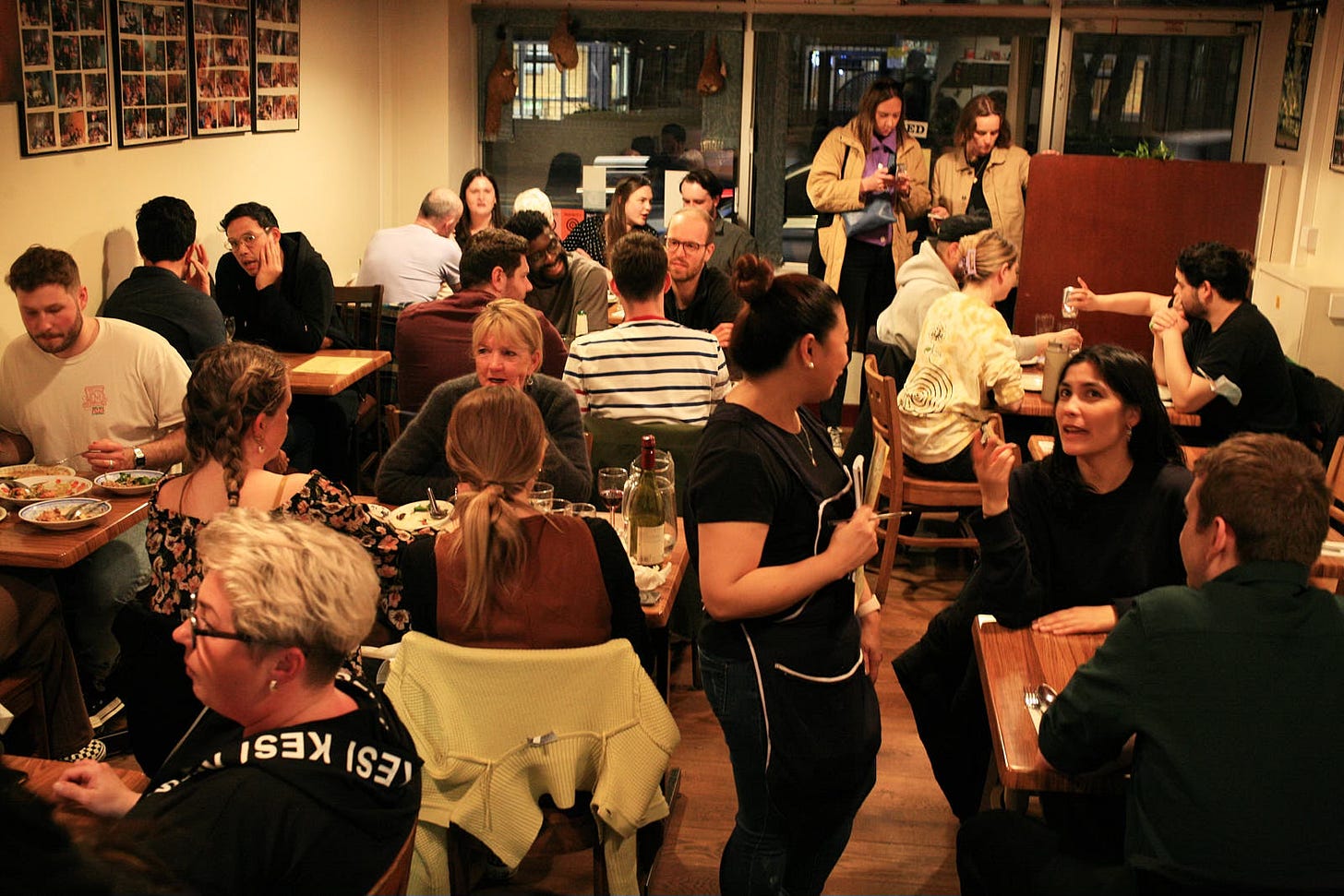What Was Singburi?
As Singburi 2.0 opens in Shoreditch, Jonathan Nunn remembers just how extraordinary the Kularbwong family’s Leytonstone restaurant really was. Photography by Michaël Protin.
Good morning and welcome back to Vittles Restaurants.
A reminder that you can still secure a copy of Issue 1 of our magazine through our website here or order from one of our stockists across the UK, Europe and the rest of the world here.
I have a theory about Singburi, the Leytonstone Thai cafe that has been accused by multiple credible publications of being the single best restaurant in London. My theory is this: everyone who loves it, no matter when they first ate there, feels deep down in their marrow that the restaurant is theirs and that it should stay exactly the way they found it.
For the first decade and a half of Singburi’s life, this meant a restaurant for locals, where you might greet its owners Thelma and Tony Kularbwong by name and measure out the remains of your evenings on the restaurant’s BYOB policy. If you came to it somewhere between 2016 and 2020, it was a destination restaurant filled with diners who, like you, had travelled far for its blackboard of specials curated by Tony and Thelma’s son Sirichai (Siri to those who know him). If you arrived after 2020, you would only have known Singburi as a hype restaurant with no usable booking system, where the thrill was getting a table in the first place.
If my theory is correct, it poses a problem for any restaurant that wants to call itself Singburi – particularly the Singburi that opened last month in Montacute Yards in Shoreditch, a new cookie-cutter development backed by real-estate developers Brockton Capital and Blackstone. Aside from its name, this restaurant currently has only two things in common with the old Singburi: both involve the presence of Siri (now a co-owner alongside Nick Molyviatis – formerly of Kiln and Plaza Khao Gaeng – and Alex Gkikas, who ran Catalyst Cafe), and both serve Thai food. However, there are new details to Theseus’s ship. There is a booking system and a credit card machine; there are stools and terrazzo tiles; there are drinks menus and tasteful fonts. There is a humane level of air conditioning. To call this ‘Singburi’ is bound to unsettle those who remember the oddities and unsanded edges of the original. It’s the restaurant equivalent of your dad forcing you to call his new girlfriend ‘Mum’.
I cannot review the new Singburi. I spent so many evenings in the old restaurant that I got to know and became friends with Siri. Since then, our careers have become unexpectedly entwined; any assessment I could give you of the restaurant’s new qualities would be compromised. However, I am interested in burying the old Singburi. In 2021, twenty-two years into its first life and with no PR, advertising budget or ambition beyond serving its neighbourhood, Singburi was named the best restaurant in the city by Time Out; two years later, the National Restaurant Awards ranked it the seventy-third best restaurant in the UK, an anomaly in a list dominated by central London and Michelin-starred destination restaurants. In 2024, The Infatuation London gave Singburi an almost unimprovable 9.8 out of 10, making it the best-rated restaurant of any city in which The Infatuation operates. The trajectory of that Singburi, is perhaps, the most unlikely London restaurant story of the past decade.
After the paywall: the symbiotic relationship between food media and Singburi, how coverage and hype changed the restaurant, for better and worse, and some thoughts on the future of Singburi 2.0.




